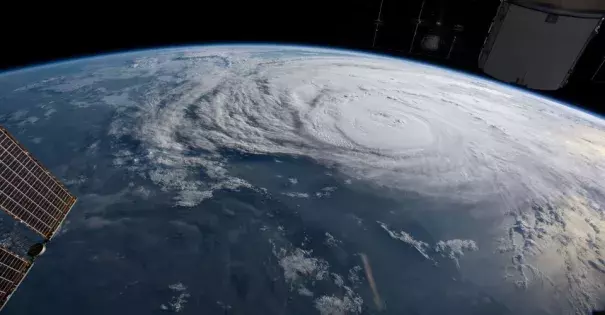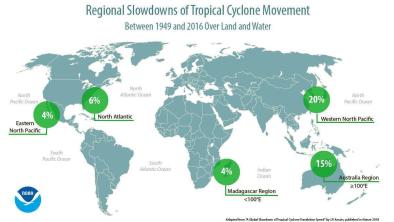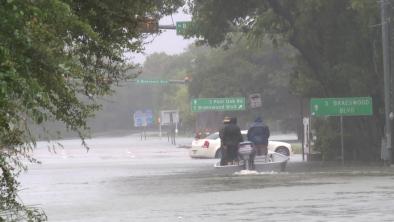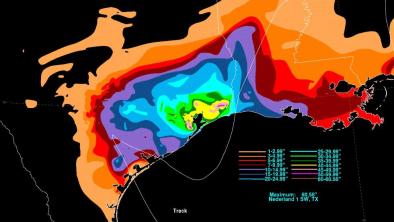Did Climate Change Intensify Hurricane Harvey?

Harvey benefitted from unusually toasty waters in the Gulf of Mexico. As the storm roared toward Houston last week, sea-surface waters near Texas rose to between 2.7 and 7.2 degrees Fahrenheit above average. These waters were some of the hottest spots of ocean surface in the world. The tropical storm, feeding off this unusual warmth, was able to progress from a tropical depression to a category-four hurricane in roughly 48 hours.
“This is the main fuel for the storm,” says Kevin Trenberth, a senior scientist at the U.S. National Center for Atmospheric Research. “Although these storms occur naturally, the storm is apt to be more intense, maybe a bit bigger, longer-lasting, and with much heavier rainfalls [because of that ocean heat].”
This also suggests an explanation for one of Harvey’s strangest and scariest behaviors. The storm intensified up until the moment of landfall, achieving category-four strength hours before it slammed into the Texas coast. This is not only rare for tropical cyclones in the western Gulf of Mexico: It may be unique. In the past 30 years of records, no storms west of Florida have intensified in the last 12 hours before landfall.
Why do storms normally weaken—and why didn’t Harvey? As mentioned above, hurricanes feed and grow on warm ocean surface waters. But as they grow, their strong winds often pick up seawater, churning the oceans and moving the warmest waters deep below the surface. The same winds also bring newer, colder water closer to the atmosphere, which usually serves to drain energy and weaken the storm.
That didn’t happen with Harvey. The hurricane churned up water 100 or even 200 meters below the surface, said Trenberth, but this water was still warm—meaning that the storm could keep growing and strengthening. “Harvey was not in a good position to intensify the way it did, because it was so close to land. It’s amazing it was able to do that,” he told me.
All of this said, a storm like Harvey could have happened even if there was no climate change. Planning experts have long fretted over the possibility of a major hurricane striking Houston. Harvey is also a powerful hurricane forming in one of the most hurricane-friendly regions of the world at the peak of hurricane season. Storms similar to it would form in any climate.
But Trenberth says that the extra heat could make the storm more costly and more powerful, overpowering and eventually breaking local drainage systems.
“The human contribution can be up to 30 percent or so up to the total rainfall coming out of the storm,” he said. “It may have been a strong storm, and it may have caused a lot of problems anyway—but [human-caused climate change] amplifies the damage considerably.”
...
This means that thousands of people—and perhaps tens of thousands of people—are facing a terrifying and all-too-real struggle to survive right now. In an age when the climate is changing rapidly, a natural question to ask is: What role did human-caused global warming play in strengthening this storm?
Climate scientists, who specialize in thinking about the Earth system as a whole, are often reticent to link any one weather event to global climate change. But they say that aspects of the case of Hurricane Harvey—and the recent history of tropical cyclones worldwide—suggest global warming is making a bad situation worse.
...
Storms like Harvey are helped by one of the consequences of climate change: As the air warms, some of that heat is absorbed by the ocean, which in turn raises the temperature of the sea’s upper layers.
Related Content





